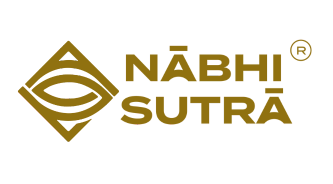Udwarthanam (Udvartana): The Ancient Ayurvedic Powder Massage for Health, Beauty, and Detox
In the realm of Ayurvedic therapies, Udwarthanam (Sanskrit: उद्वर्तनम्), also known as Udvartana, stands out as a time-tested, powerful technique that balances the body, enhances beauty, and promotes health from within. This traditional powder massage is much more than a spa ritual—it’s a deeply therapeutic intervention rooted in ancient Ayurvedic texts like Charaka Samhita, Ashtanga Hridaya, and Sushruta Samhita.
Udwarthanam is unique because it involves the rubbing of dry or medicated herbal powders in an upward direction against the body’s hair follicles. It stimulates the lymphatic system, improves circulation, reduces fat, and rejuvenates the skin. In the age of rising lifestyle disorders and toxin accumulation, Udwarthanam has emerged as a relevant and effective Ayurvedic practice.
This article offers a full-spectrum understanding of Udwarthanam—from classical origins and indications to modern applications, method, and benefits.
Etymology and Classical Reference
The term Udvartana is derived from two Sanskrit words:
“Ud” – upward
“Vartana” – to move or rub
Hence, Udvartana refers to the process of massaging the body in an upward stroke using dry or wet medicated powders.
Classical References:
Charaka Samhita – Sutrasthana (14/23):
Udwartanam kaphaharam medasah prashamanam shramanashanam twakprasadakaram cha tat.”
Translation: Udvartana pacifies Kapha, alleviates excessive fat, relieves fatigue, and improves skin texture.Ashtanga Hridaya – Sutrasthana (2/13):
Describes Udwartana as an integral part of Dinacharya (daily routine) for maintaining good health.
These references highlight that Udwartana is not merely a treatment for disorders but a preventive and daily health practice.
Types of Udwarthanam
1. Snigdha Udwarthanam (Oleated/Unguent Massage)
Udwarthanam is broadly classified into two main types, based on the materials and the purpose:
Medium: Medicated powders mixed with herbal oils.
Purpose: Ideal for Vata-Kapha or dry skin conditions.
Indications: Muscle stiffness, joint disorders, neurological issues.
2. Ruksha Udwarthanam (Dry Powder Massage)
Medium: Only dry herbal powders (no oil).
Purpose: Best suited for Kapha and Meda (fat) disorders.
Indications: Obesity, cellulite, sluggish lymphatic system, body odor, Kapha imbalance.
Ingredients Used in Udwarthanam
A variety of herbal powders (choorna) are used depending on the condition being treated. Common ingredients include:
Herb |
Properties |
Triphala |
Detoxifying, rejuvenating |
Vacha (Acorus calamus) |
Stimulant, decongestant |
Musta (Cyperus rotundus) |
Anti-inflammatory, digestive |
Haridra (Turmeric) |
Antioxidant, anti-inflammatory |
Kolakulathadi Choorna |
Traditionally used for obesity and stiffness |
Yava (Barley) |
Scrubbing, fat-reducing |
Kola, Kulattha, Methika (Herbal flours) |
Used in custom blends for weight loss |
These are often formulated in classical preparations like Kolakulathadi Choorna, Triphalaadi Choorna, or Khadiradi Choorna.
Procedure of Udwarthanam
The procedure can vary slightly depending on whether it is dry or oily, but the general steps include:
1. Pre-procedure (Purva Karma):
Assessment of Prakriti, Dosha, and health status by a qualified Ayurvedic physician OR can be done home
- Fomentation or mild Abhyanga (oil massage) may be done in some cases.
2. Main Procedure (Pradhana Karma):
The PERSON lies on a Droni
Warm herbal powder is applied and massaged in upward strokes (against hair follicles), typically in seven positions.
Massage is rhythmic, forceful, and may last 30–60 minutes depending on individual needs.
Done in a synchronized manner
3. Post Procedure (Paschat Karma):
Herbal steam bath (Swedana) may follow to enhance detox.
Rest and light digestible food advised post-therapy.
Mild medicated oils may be applied to soothe the skin.
Duration and Course
A typical Udwarthanam session lasts 45–60 minutes.
A course of 7, 14, or 21 days is recommended depending on therapeutic goals.
Often prescribed as part of Panchakarma or in standalone detox programs.
Therapeutic Indications of Udwarthanam
Udwarthanam is recommended for a wide array of health conditions and wellness goals:
Metabolic and Weight-Related Disorders:
Obesity (Sthoulya)
Hyperlipidemia
Cellulite and subcutaneous fat accumulation
Neurological and Musculoskeletal Conditions:
Hemiplegia
Rheumatoid arthritis
Stiffness and heaviness in limbs
Skin and Beauty:
Acne and skin congestion
Pigmentation and tanning
Skin tone and glow enhancement
Kapha-Vata Disorders:
Lethargy, heaviness, poor circulation
Coldness and sluggish digestion
Lifestyle and Detox:
- Sedentary lifestyle impacts
- Postpartum care
- Seasonal detox routines (Ritucharya)
Benefits of Udwarthanam
The health benefits of Udwarthanam are both therapeutic and cosmetic :
1. Reduces Excess Fat and Cellulite
Through frictional massage and stimulation of lymphatic flow, it helps mobilize and expel subcutaneous fat.
2. Enhances Skin Texture
Exfoliates dead skin cells, improves complexion, and unclogs pores, leading to radiant, healthier skin.
3. Detoxification and Circulation Boost
Stimulates sweat glands and lymphatic drainage, aiding in removal of toxins (Ama) from the body.
4. Muscle Toning and Strength
Strengthens and tones the muscles, reduces fatigue and heaviness—especially useful for athletes or sedentary workers.
5. Improves Digestive Fire (Agni)
By balancing Kapha and stimulating metabolism, it indirectly improves digestion and reduces metabolic sluggishness.
Contraindications of Udwarthanam
While Udwarthanam is generally safe when supervised, certain conditions warrant caution or avoidance:
Pitta prakriti individuals (especially in hot seasons)
Acute skin conditions (eczema, psoriasis flare)
Severe weakness or emaciation
Pregnancy (unless advised postpartum)
Open wounds or skin abrasions
Always consult a qualified Ayurvedic practitioner before beginning Udwarthanam.
Udwarthanam in Modern Wellness and Spa Industry
Today, Udwarthanam has found its way into Ayurvedic spas, wellness resorts, and even fitness centers. While it may be offered as a weight-loss or beauty treatment, it’s crucial to differentiate between authentic Ayurvedic Udwarthanam and superficial spa variants.
Key differences include:
Use of medicated powders , not cosmetic scrubs.
Therapeutic intent guided by Dosha analysis .
Trained Ayurvedic therapists using classical methods .
When performed authentically, Udwarthanam becomes more than a body treatment—it is a samskara , a transformative Ayurvedic experience.
Udwarthanam is a powerful Ayurvedic therapy that offers a rare combination of detoxification, fat reduction, skin rejuvenation, and overall vitality. Far beyond a beauty regimen, it is a practice deeply embedded in classical Ayurveda and now increasingly relevant in the modern context of sedentary lifestyles and metabolic imbalances.
For those seeking a natural, time-honored, and holistic solution to weight management, skin health, and systemic detox, Udwarthanam offers a scientifically grounded and spiritually enriching path.


